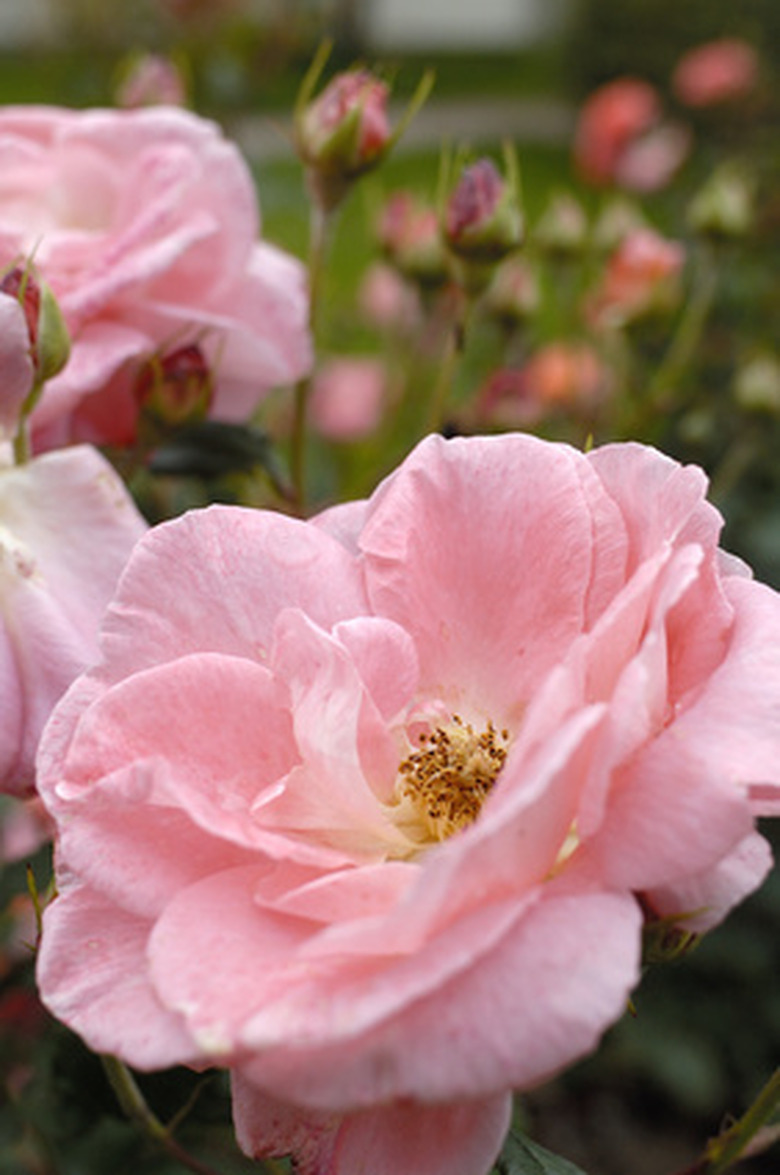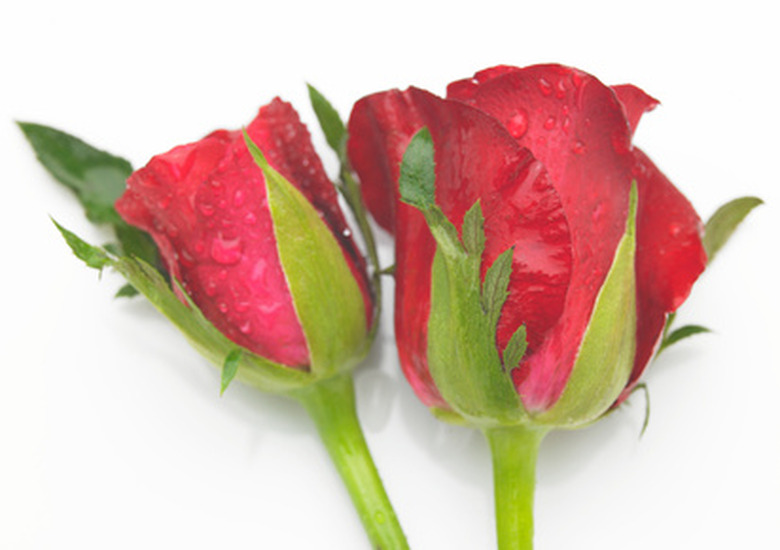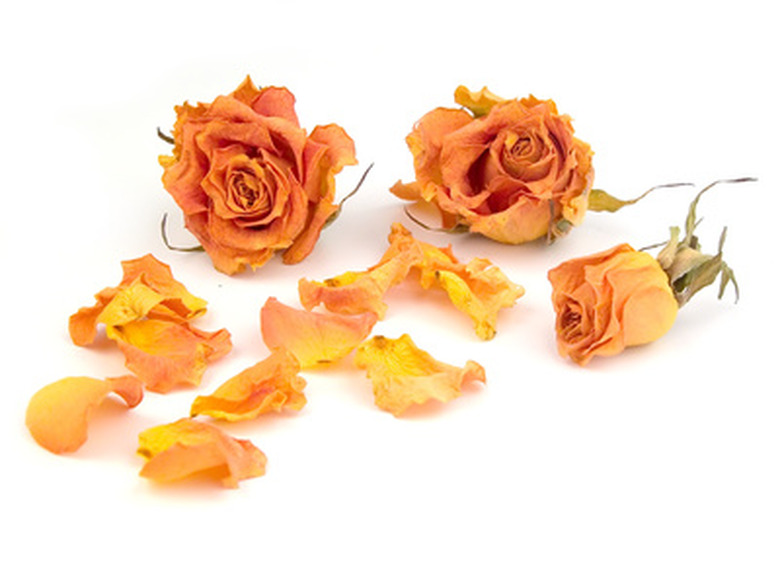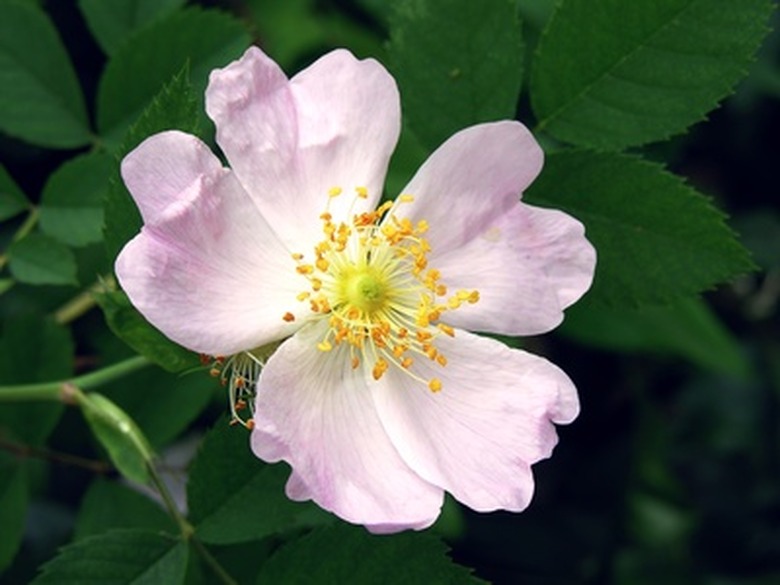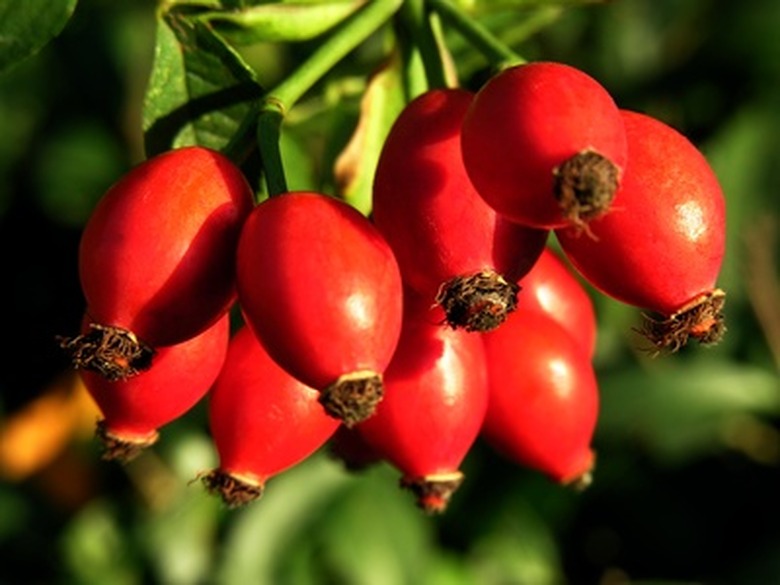The Parts Of A Rose Flower
Roses are "perfect" flowers, meaning that each flower has complete male and female parts. A rose blossom produces male pollen, and it also contains the female parts so it can produce seeds after it is pollinated. Rose seeds are contained in the fruit, or "hip" that develops from a pollinated rose flower.
Sepals
Sepals are the green, leaf-like covering that protects the rose bud before it blooms. The sepals are the first part of the bud to unfurl. They are modified leaves.
Petals
Rose petals are the colored parts that attract insect pollinators as well as humans. Petals are also modified leaves.
- Roses are "perfect" flowers, meaning that each flower has complete male and female parts.
- A rose blossom produces male pollen, and it also contains the female parts so it can produce seeds after it is pollinated.
Stamen
The stamen is the male part of the rose flower. It consists of the filaments, anthers and pollen. The filaments are fiber-like structures that extend from the center of the rose. At the tip of each filament is an anther, which is the part that carries the dust-like pollen grains. When the rose first opens, the anthers are yellow with pollen. Once bees have done their work pollinating, the anthers lose most of the yellow color.
Pistil
The pistil is the female part of the rose flower. It consists of the stigma, which is the sticky opening to the style, which is the tube that connects to the flower's ovary. The sticky stigma collects pollen grains, which travel down the style to the ovary. The ovary contains ovules, or structures of egg cells. Once pollinated, the egg cells develop into seeds in the ovary, which develops into the rose hip.
- The stamen is the male part of the rose flower.
- At the tip of each filament is an anther, which is the part that carries the dust-like pollen grains.
Parts Of A China Rose Flower
The China rose is a type of hibiscus that is native to Asia, particularly the warm or tropical areas of the continent. The flowers of China roses grow up to eight inches in diameter and are trumpet shaped. In a China rose, the pistil is prominent and centrally located. The ovules and pollen grains fuse to form the precursor to another plant. The stamen is the "male" part of the China rose and consists of the anthers and filaments. In a China rose, the filaments are fused in a bundle around the style, while the anthers remain unbound and encircle the stigma. The fact that the filaments are fused and the anthers are free makes the China rose a monadelphous plant. Although China roses are capable of self-pollination, each flower has five large, flat petals that are brightly colored to attract pollinators.
- The China rose is a type of hibiscus that is native to Asia, particularly the warm or tropical areas of the continent.
- The stamen is the "male" part of the China rose and consists of the anthers and filaments.
